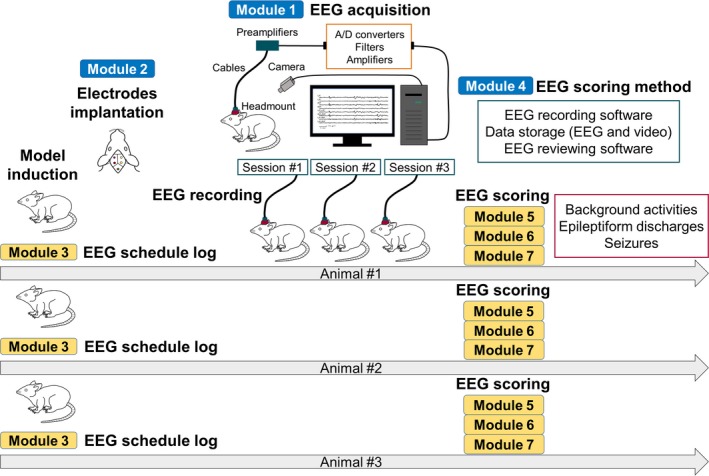Figure 1.

Diagrams showing the application of each CRF module. Module 1, EEG/video data acquisition; module 2, electrodes; module 3, EEG recording schedule/log; module 4, EEG scoring method; module 5, EEG scoring ‐ General information and background activity; module 6, EEG scoring – epileptiform discharges; module 7, EEG scoring – seizures. Blue bars indicate the modules that are filled as single entries for each animal and could be used across animals that enter the same study design, simplifying data entry (e.g., modules 1, 2, 3‐a, 3‐b, 3‐c, 4). Yellow bars indicate modules that need to be filled for each animal either as single or recurrent entry, depending on the study design (e.g., modules 3‐d, 5, 6, 7). The order may be reversed between model induction and electrode implantation and the number of EEG recordings may be single session depending on the study protocol. The use of common templates to describe filled CRF modules that could be frequently recurring within the study may simplify data entry. For example, creating a pre‐filled module 1, 2, and 4 based on the study design may allow re‐use and re‐population of relevant data for multiple animals. Creation of a “typical EEG background” CRF template for controls may also allow re‐use in other animals and files that demonstrate the same background.
